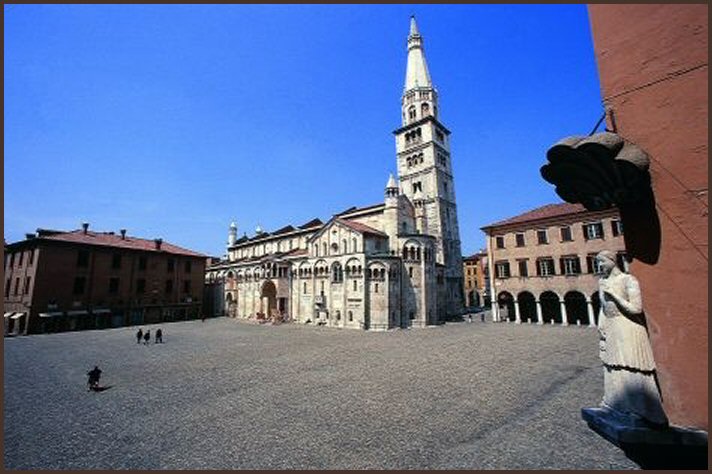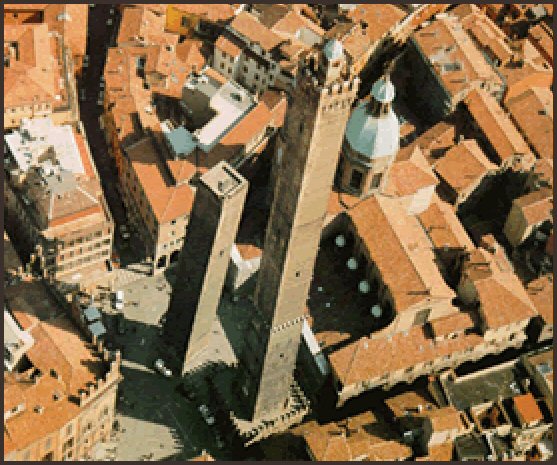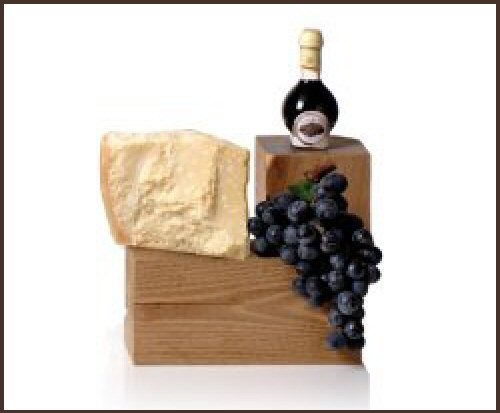 |
|
Maranello:
The home of Ferrari and of motor racing. The Ferrari Gallery is open for visitors and is just a few kilometres away from the hotel. The gallery has a display of the cars that made motor racing history.
Visit the Ferrari Gallery website |
 |
|
Modena:
A World Heritage Site:
THE ROMANESQUE IN MODENA
One of the highlights of the artistic heritage in the Modena area is undoubtedly its Romanesque art - a style whose roots are entrenched in the Roman world, which inspired its themes and figurative motifs, and expresses the great religious and civil ferment that took place around the year 1000. Modena also saw the building of cathedrals and country churches of majestic elegance like all the other major centres in Mediaeval Europe.
Modena Cathedral is an undisputed masterpiece - the landmark work of a great architect (Lanfranco) and a great master sculptor (Wiligelmo). Its beauty and originality are still astonishing today.
In 1997, the Cathedral, the Ghirlandina Bell Tower and Piazza Grande were deservedly acknowledged by UNESCO as a
World Heritage Site.. |
 |
|
Reggio Emilia:
Reggio Emilia (Regium Lepidi) became an urban centre at the beginning of the 2nd century BC with the arrival of the Romans, as they built the road network along the via Emilia and the surrounding plain was drained and people settled there. Today, scattered remains testify to a period of intense economic activity for the whole imperial period until the onset of the barbaric invasions. Subsequently, the Bishop took over the role of safeguarding the continuity of civil power and the permanence of the town starting in the 8th century. Later, in the 11th century, the Reggio Emilia area was the fulcrum of Empress Matilda's domains, which she fortified by building an imposing series of castles. In 1077, one of the most celebrated episodes in the War of Investitures took place within the town walls of Canossa: Emperor Henry IV, in the guise of a pilgrim, appealed to Pope Gregory VII for the annulment of his excommunication. Meanwhile, the free municipalities were rising on the ashes of feudalism: Reggio was among the first. Then, at the beginning of the 15th century, it came under the power of the Este Family. |
 |
|
Bologna:
The two 'twin' towers are traditionally the symbol of Bologna, standing tall at the strategic point where the Via Emilia once entered the town. Today, they are in the middle of the opening of Porta Ravegnana square but they no longer have their original layout, which once had wooden constructions around their base and hanging passageways.
Made in brick, unlike most of the buildings at the time, they had a very important military function (for signalling and defence) but also represented the social prestige of the local nobility with their imposing height. There were at least one hundred towers dotting the town’s skyline in the late 12th century but only twenty have survived centuries of fire, warfare and lightning. Quite recently the 1670 statue of San Petronio by Gabriele Brunelli was restored to its original location below the towers after being removed in 1871 for "traffic reasons".
|
 |
|
Touring through the local food and wine:
Traditional Balsamic Vinegar of Reggio Emilia
|




